Winter can bring pretty scenery, but snow, ice and sleet are difficult to get around in, especially on foot. According to the Centers for Disease Control and Prevention (CDC), more than 1.2 million people a year are hospitalized for injuries sustained from falling. Jennifer Lentz, P.T., D.P.T., a physical therapist at ProFitness Physical Therapy, notes the uptick in weather-related slips and falls during the winter months. “Everyone is always on the go, and it takes just one second of not paying attention to wipe out and do real damage when it’s icy outside,” she says. The problem is, anytime you get an injury, you’re more prone to reinjury. In fact, one out of every seven falls causes a serious injury, according to the CDC. So keep these tips in mind to help you brave the elements all season long.
 Watch Your Step
Watch Your Step
This may seem obvious, but it’s important to avoid icy spots and to use walkways that have been cleared. Look out for black ice, and test any areas you’re unsure about with your foot before stepping. And remember that texting, selfie-snapping and even talking on your cell while walking can be dangerous. “I can’t stress this enough—put the cellphone away,” says Lentz. “Nothing on it is worth getting hurt over.”
Treat It Right
Lentz suggests sticking to surfaces that have been treated and/or cleared rather than forging new paths. “Anything salted or sanded is definitely safer than just going rogue on snow—you don’t know if it’s packed or how much ice may be below,” she says.
Likewise, you can fight winter weather on your own walkways and driveway with melting and traction agents. And remember: The risks in getting around can linger into spring, Lentz says, after ice melts and forms potholes.
Step Into Gear
Lentz recommends investing in high-quality snow boots. “A lot of people rely on their rain boots, but those don’t have the right traction for snow and ice,” says Lentz, nor are they made for low temperatures. Shop for something warm and designated as slip-resistant. Don’t feel like buying new boots? Another option is ice cleats that can be strapped onto your existing boots. These are designed to provide better traction if you happen to hit an icy patch.
Walk Properly
The best way to walk in the winter is flat-footed. “People tend to take tiny steps when it’s snowy or icy, and that’s actually unsafe because you have less support,” says Lentz. “You want to feel the ground fully when you take a step.” It’s also important to move slowly. “Give yourself plenty of time to get from point A to B—no running up stairs or across streets,” advises Lentz.
Mind Your Balance
Winter is not the time for toting around heavy bags. ”We have a tendency to protect whatever we’re holding rather than our bodies or faces,” says Lentz. “So keep your hands free and you’ll have a better chance of catching your balance if you slip.” If you must carry something, put it in a backpack; and keep your hands out of your pockets.
Break Your Fall
Unfortunately, some falls are unavoidable. If it does happen, try not to stick your hand out to break your fall, which could result in a broken wrist. “Try to land on your behind, because there is some padding there,” says Lentz. The next best thing is keeping your elbows bent and staying loose. “This allows you to catch and cushion yourself a bit,” says Lentz. “Things could break if you’re stiff.”
For the ultimate protection at home, the personal liability portion of a homeowners insurance policy through the GEICO Insurance Agency could cover you if someone should slip and get injured on your property. Visit geico.com for more information.
Read More: Want more winter-weather advice? Here’s a checklist on how to prep your car for the cold.
By Danielle Blundell

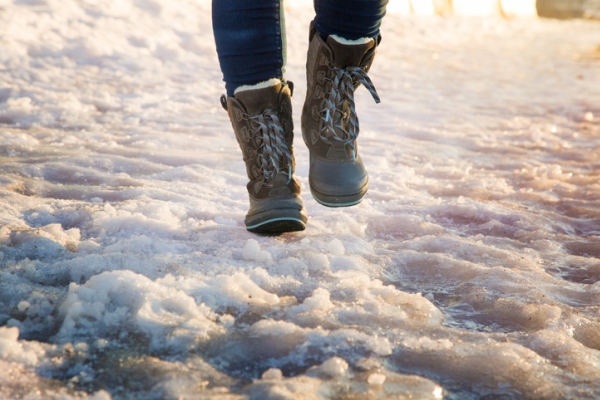

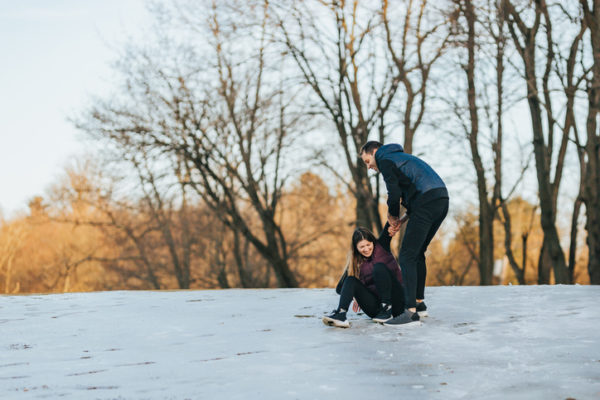




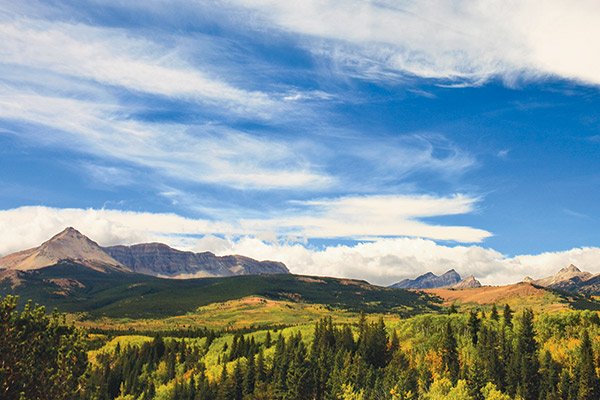
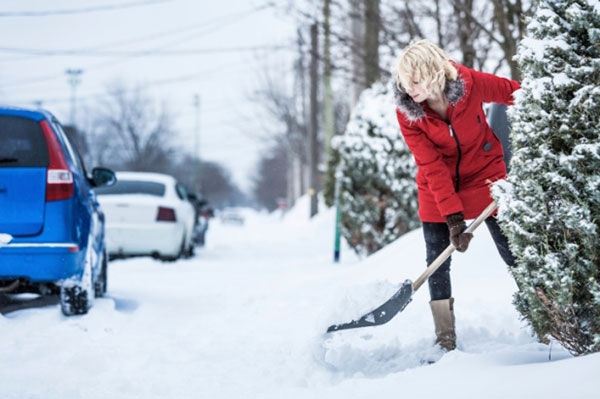
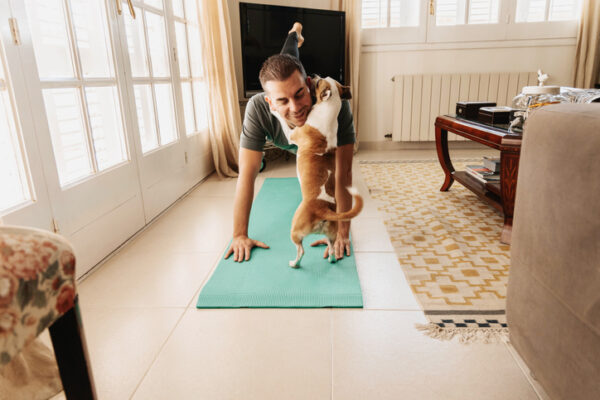
Leave a comment